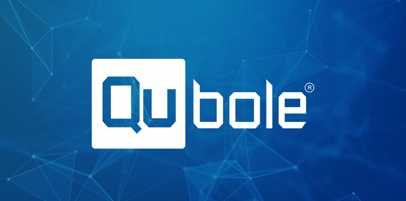We’re thrilled to announce a major addition to our analytics engine lineup: Trino—a powerful, distributed SQL query engine built for high-performance analytics directly on your data lake.
Launching with Trino 447, this marks a new era of interactive querying at scale on Qubole, giving data teams blazing-fast access to data across Hive, Iceberg, object storage, and more—all with ANSI-compliant SQL.
Why Trino? Because Fast, Open, and Federated Matters More Than Ever
Born from the creators of Presto, Trino was built to tackle the challenges of modern data analytics: speed, scalability, and the ability to query multiple data sources without ETL or movement.
Whether you’re running ad-hoc analytics, powering BI dashboards, or building complex pipelines—Trino delivers sub-second response times across petabyte-scale datasets.
🔍 Key Features That Make Trino Stand Out
- High-Speed Federated Queries: Query across Hive, Iceberg, Delta Lake, PostgreSQL, MySQL, Kafka, and more—all in a single SQL statement. No data movement required.
- Massively Parallel Processing (MPP): Trino scales horizontally across nodes and executes queries with blazing speed through parallel, distributed execution.
- Advanced SQL Support: Full ANSI SQL support, window functions, common table expressions, JSON processing, and geospatial functions—making it developer- and analyst-friendly.
- Optimized for the Cloud & Lakehouses: Trino works natively with S3, ADLS, and other cloud storage solutions, making it ideal for querying data in open formats like ORC, Parquet, and Avro.
- Iceberg & Delta Lake Support: Deep integrations with next-gen table formats provide powerful features like schema evolution, time travel, partition pruning, and row-level deletes.
- Pluggable Security & Governance: Integrates with Apache Ranger and enterprise identity providers for granular access control and unified data governance.
- Growing Ecosystem and Tooling: Connect seamlessly with tools like Superset, Tableau, dbt, Apache Superset, and Jupyter Notebooks.
📘 See the full documentation: https://trino.io/docs/current
🆚 Trino vs Presto: What’s the Real Difference?
Although Trino originated as a fork of Presto, it has since evolved into a far more advanced and production-ready SQL engine. Here’s a head-to-head comparison:
| Feature / Capability | PrestoSQL (Legacy) | Trino (Modern Successor) |
| Project Origin | Facebook (PrestoDB) | Creators of Presto at Meta |
| Community & Governance | Fragmented | Unified, vibrant, and growing |
| Iceberg/Delta Lake Support | Partial or experimental | Full, production-grade |
| Query Optimizer | Basic | Cost-based, highly tunable |
| Security (Ranger/Auth) | Limited | Robust, pluggable |
| Scalability & Performance | Inconsistent | Engineered for large-scale queries |
| Release Cadence | Sporadic | Frequent, with detailed changelogs |
| Commercial Adoption | Declining | Widely adopted by Netflix, LinkedIn, Lyft, Starburst & more |
Trino is no longer just “the next version of Presto”—it’s a different class of engine, trusted by global-scale companies for critical workloads.
Learn more: https://trino.io
🔧 What This Means for Qubole Users
By bringing Trino to Qubole, we’re giving users the most powerful SQL engine available for federated analytics on the data lake. That means:
✅ Lightning-fast queries on massive datasets
✅ Zero data duplication—analyze where your data lives
✅ Unified access to structured and semi-structured data
✅ Lower infrastructure costs through efficient execution
✅ Smooth integration with open table formats and lakehouse patterns
Ready to Try Trino?
Trino is available today on Qubole as a new cluster engine type, launching with engine version 447. All cluster settings remain the same as Presto, ensuring a smooth onboarding experience.
You can create Trino clusters directly from the Clusters page, just like any other engine type—no additional setup needed.
📘 Learn how to create and manage clusters on Qubole:
https://docs.qubole.com/en/latest/user-guide/clusters/cluster-basics.html
In Closing
The launch of Trino is a bold step forward in our mission to empower data teams with the fastest, most flexible tools on the data lake. It’s not just a new engine—it’s a modern foundation for SQL at scale.
We can’t wait to see what you build with it.



